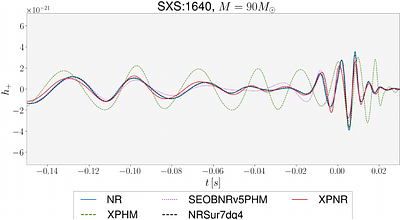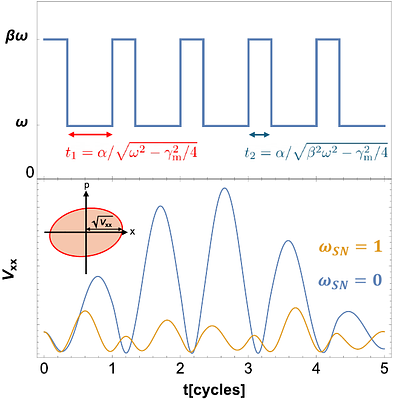By: Shinji Mukohyama, Emeric Seraille, Kazufumi Takahashi, Vicharit Yingcharoenrat
We develop the effective field theory (EFT) of perturbations in the context of scalar-tensor theories with a spacelike scalar profile on arbitrary black hole backgrounds. Our construction of the EFT is based on the fact that in the unitary gauge, where the scalar field is chosen as one of the spatial coordinates, the background scalar field spontaneously breaks the diffeomorphism invariance along the direction of its gradient. The residual sy... more
We develop the effective field theory (EFT) of perturbations in the context of scalar-tensor theories with a spacelike scalar profile on arbitrary black hole backgrounds. Our construction of the EFT is based on the fact that in the unitary gauge, where the scalar field is chosen as one of the spatial coordinates, the background scalar field spontaneously breaks the diffeomorphism invariance along the direction of its gradient. The residual symmetry on a timelike hypersurface of constant scalar field is referred to as the $(2+1)$d diffeomorphism invariance. We then derive a set of consistency relations, imposed on the EFT parameters, by requiring that the EFT action in the unitary gauge be invariant under the $(2+1)$d diffeomorphisms. For concreteness, we apply the EFT to study the background dynamics of a class of non-static and spherically symmetric solutions, focusing in particular on a black hole solution with a time-varying mass. We emphasize that our EFT framework is broadly applicable to any black hole background as long as the scalar field remains spacelike throughout the spacetime region of interest. This formulation provides a model-independent approach for testing scalar-tensor theories as gravity beyond general relativity in the strong-gravity regime. less
By: Neven Bilić, Dragoljub D. Dimitrijević, Goran S. Djordjević, Milan Milošević, Marko Stojanović
The local primordial density fluctuations caused by quantum vacuum fluctuations during inflation grow into stars and galaxies in the late universe and, if they are large enough, also produce primordial black holes. We study the formation of the primordial black holes in $k$-essence inflation models with a potential characterized by an inflection point. The background and perturbation equations are integrated numerically for two specific model... more
The local primordial density fluctuations caused by quantum vacuum fluctuations during inflation grow into stars and galaxies in the late universe and, if they are large enough, also produce primordial black holes. We study the formation of the primordial black holes in $k$-essence inflation models with a potential characterized by an inflection point. The background and perturbation equations are integrated numerically for two specific models. Using the critical collapse and peaks formalism, we calculate the abundance of primordial black holes today. less
By: Johanna Borissova, Bianca Dittrich, Astrid Eichhorn, Marc Schiffer
We put forward the first analysis of renormalization group flows in an area-metric theory, motivated by spin-foam quantum gravity. Area-metric gravity contains the well-known length-metric degrees of freedom of standard gravity as well as additional shape-mismatching degrees of freedom. To be phenomenologically viable, the shape-mismatching degrees of freedom have to decouple under the renormalization group flow towards lower scales. We test ... more
We put forward the first analysis of renormalization group flows in an area-metric theory, motivated by spin-foam quantum gravity. Area-metric gravity contains the well-known length-metric degrees of freedom of standard gravity as well as additional shape-mismatching degrees of freedom. To be phenomenologically viable, the shape-mismatching degrees of freedom have to decouple under the renormalization group flow towards lower scales. We test this scenario by calculating the renormalization group flow of the masses and find that these are in general even more relevant than dictated by their canonical scaling dimension. This generically results in masses which are large compared to the Planck mass and thereby ensure the decoupling of shape-mismatching degrees of freedom. In addition, the latter come in a left-handed and right-handed sector. We find that parity symmetry does not emerge under the renormalization group flow. Finally, we extract the renormalization group flow of the Immirzi parameter from this setup and find that its beta function features zeros at vanishing as well as at infinite Immirzi parameter. less
By: Eleanor Hamilton, Marta Colleoni, Jonathan E. Thompson, Charlie Hoy, Anna Heffernan, Meryl Kinnear, Jorge Valencia, Felip A Ramis Vidal, Cecilio García-Quirós, Shrobana Ghosgh, Lionel London, Mark Hannam, Sascha Husa
We present the frequency-domain quasi-circular precessing binary-black-hole model PhenomXPNR. This model combines the most precise available post-Newtonian description of the evolution of the precession dynamics through inspiral with merger-ringdown model informed by numerical relativity. This, along with a phenomenological model of the dominant multipole asymmetries, results in the most accurate and complete representation of the physics of ... more
We present the frequency-domain quasi-circular precessing binary-black-hole model PhenomXPNR. This model combines the most precise available post-Newtonian description of the evolution of the precession dynamics through inspiral with merger-ringdown model informed by numerical relativity. This, along with a phenomenological model of the dominant multipole asymmetries, results in the most accurate and complete representation of the physics of precessing binaries natively in the frequency-domain to date. All state-of-the-art precessing models show bias when inferring binary parameters in certain regions of the parameter space. We demonstrate that the developments presented ensure that for some precessing systems PhenomXPNR shows the least degree of bias. Further, as a phenomenological, frequency-domain model, PhenomXPNR remains one of the most computationally efficient models available and is therefore well-suited to the era of gravitational-wave astronomy with its ever growing rate of detected signals. less
By: Andraz Omahen, Simon Storz, Marius Bild, Dario Scheiwiller, Matteo Fadel, Yiwen Chu
Initialization of mechanical modes in the quantum ground state is crucial for their use in quantum information and quantum sensing protocols. In quantum processors, impurity of the modes' initial state affects the infidelity of subsequent quantum algorithms. In quantum sensors, excitations out of the ground state contribute to the noise of the detector, and their prevalence puts a bound on rare events that deposit energy into the mechanical m... more
Initialization of mechanical modes in the quantum ground state is crucial for their use in quantum information and quantum sensing protocols. In quantum processors, impurity of the modes' initial state affects the infidelity of subsequent quantum algorithms. In quantum sensors, excitations out of the ground state contribute to the noise of the detector, and their prevalence puts a bound on rare events that deposit energy into the mechanical modes. In this work, we measure the excited-state populations of GHz-frequency modes in a high-overtone bulk acoustic wave resonator (HBAR). We find that the population of the first excited state can be as low as $P_p$=(1.2$\pm$5.5)$\times10^{-5}$, corresponding to an effective temperature of 25.2 mK, which are upper bounds limited by imperfections in the measurement process. These results compare favorably to the lowest populations measured in superconducting circuits. Finally, we use the measured populations to constrain the amplitude of high-frequency gravitational waves, the kinetic mixing strength of ultra-light dark matter, and non-linear modifications of the Schr\"{o}dinger equation describing wavefunction collapse mechanisms. Our work establishes HBARs as a versatile resource for quantum state initialization and studies of fundamental physics. less
By: Davide Giordano Ario Altamura, José Luis Gaona-Reyes, Elliot Simcox, Hendrik Ulbricht, Angelo Bassi
The Schr\"odinger-Newton (SN) equation introduces a nonlinear self-gravitational term to the standard Schr\"odinger equation, offering a paradigmatic model for semiclassical gravity. However, the small deviations it predicts from standard quantum mechanics pose significant experimental challenges. We propose a novel method to amplify such deviations through periodic modulation of the trapping frequency in a levitated mechanical oscillator. We... more
The Schr\"odinger-Newton (SN) equation introduces a nonlinear self-gravitational term to the standard Schr\"odinger equation, offering a paradigmatic model for semiclassical gravity. However, the small deviations it predicts from standard quantum mechanics pose significant experimental challenges. We propose a novel method to amplify such deviations through periodic modulation of the trapping frequency in a levitated mechanical oscillator. We identify specific regimes where the SN-induced effects on the dynamics of second moments are significantly enhanced-by up to six orders of magnitude compared to unmodulated setups. We show that this protocol remains feasible within current magnetic levitation technologies and enables distinguishability between standard and SN dynamics using measurable quantities such as the position variance. Our results pave the way for a viable experimental test of the SN equation, offering a new route to probe the interface between quantum mechanics and gravity. less
5 SciCasts by .





